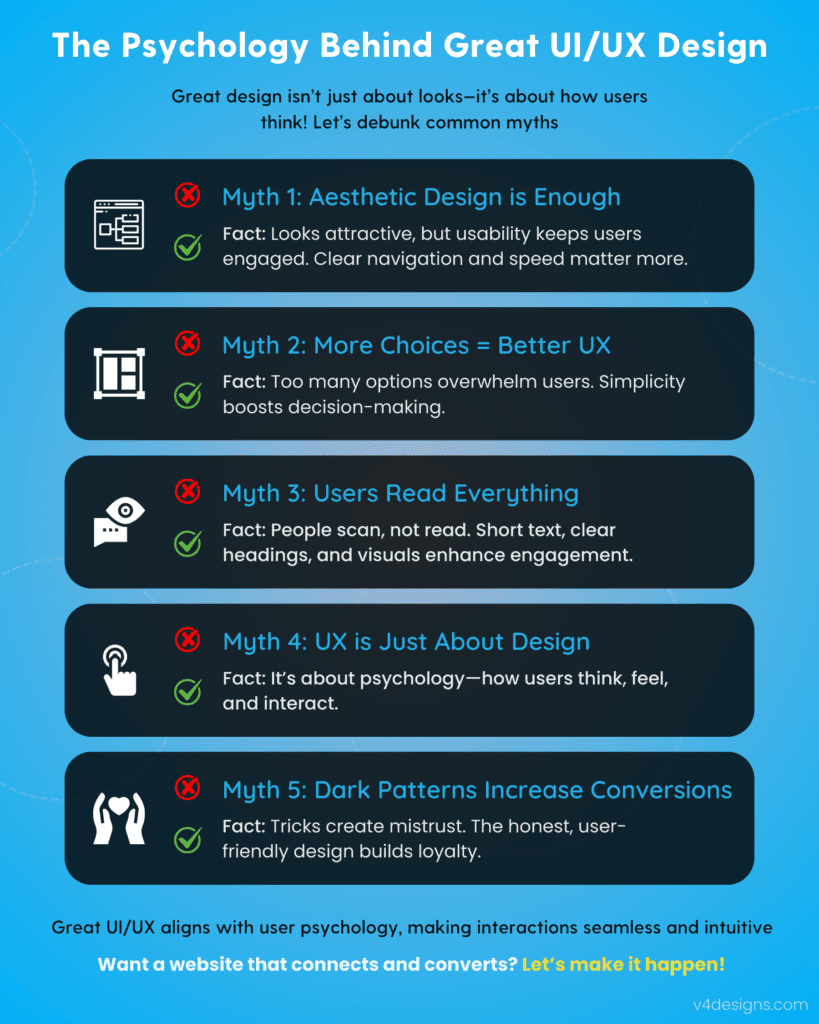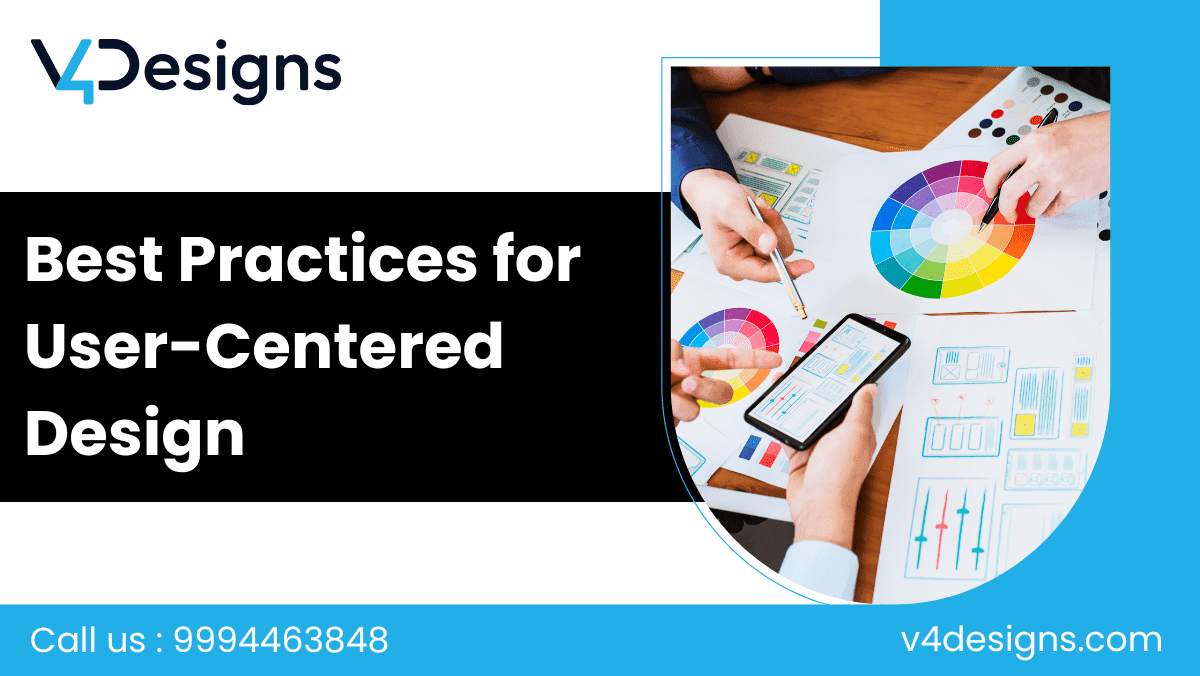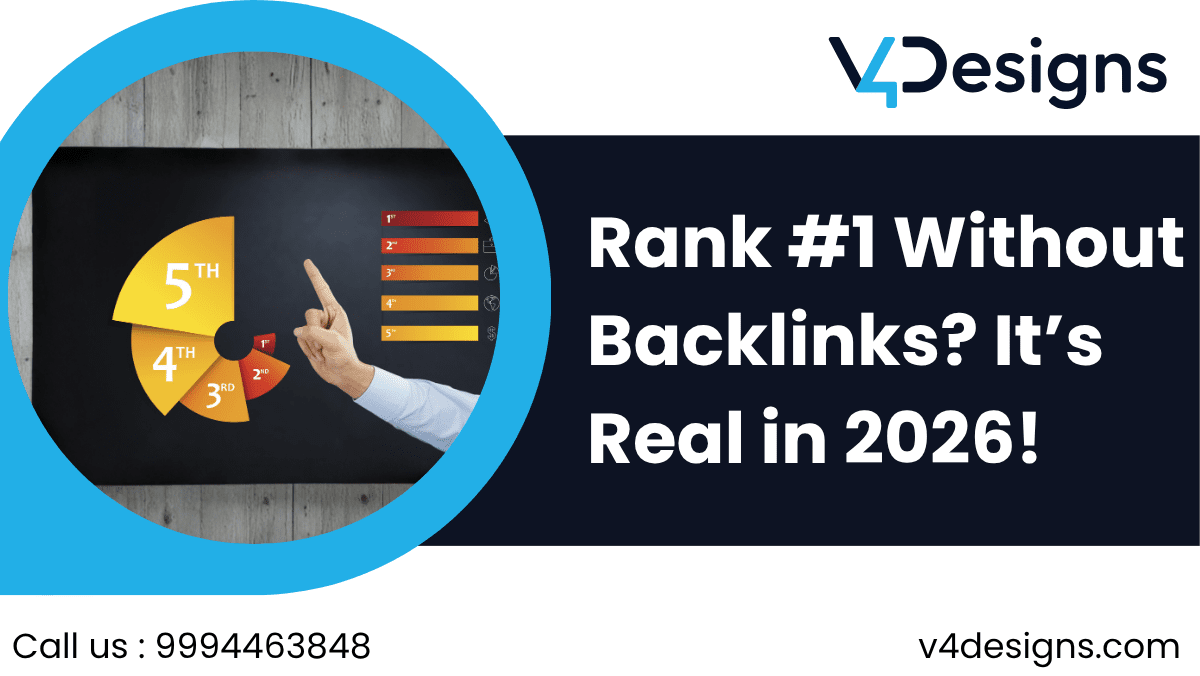Best practices for user-centered design start with understanding who your users are and how they think. People crave seamless, trustworthy, and intuitive experiences, but what happens when that’s missing? Frustrations rise, and businesses lose valuable customers over small design flaws that could have been avoided.
By tapping into psychology, businesses can create compelling and functional designs that resonate deeply with their audience. Here’s how understanding human behavior can transform custom UI/UX design for businesses and leave lasting impressions.

Why Bad UI/UX Creates Big Problems
We’ve all been there—clicking on a button that doesn’t work, struggling to complete a simple form, or giving up on a website because it’s just too confusing. Poor UI/UX design wastes customers’ time, creates uncertainty, and drives them straight to your competitors. Studies show that 88% of users won’t return to a website after a bad experience.
Imagine losing customers not because your product isn’t great, but because your design failed to gain their trust.
How Does This Issue Impact You?
Think about your website or app. Is it easy to use? Does it guide the customer naturally through your content? When customers feel confused or overwhelmed, they leave. For businesses, every abandoned shopping cart or unanswered inquiry represents missed revenue.
Could customers who would’ve loved your product be walking away with a sour first impression?
The Power of User-Centered UI/UX Design
The solution lies in understanding how your users think, feel, and behave. Great design isn’t just about aesthetics—it’s about crafting an experience tailored to meet human needs. Enter best practices for user-centered design, where every design decision stems from empathy and psychology.
From developing clear navigation to using cognitive load theory to avoid overwhelming users, the best UI/UX designs always focus on what the user wants to achieve. Consider these key features of user-centered design:
- Simplified Navigation: Users should know exactly where to go next without wasting mental energy.
- Consistent Interfaces: Consistency fosters familiarity and trust, whether on a product page or a signup form.
- Emotionally Resonant UI: Colors, typography, and micro-interactions that evoke positive emotions help form connections.
Best Practices for User-Centered Design You Can Implement Today
To truly master user-centered design, follow these actionable steps:
- Conduct Thorough User Research
Stop guessing what your users want—ask them. Conduct interviews, surveys, and usability tests to uncover pain points.
- Streamline User Journeys
Map out each step of your user’s interactions with your platform. Identify friction points and simplify navigation.
- Follow the Three-Click Rule
Ensure users can find what they’re looking for within three clicks or fewer. The faster they can access information, the better their experience.
- Build Custom UI/UX Designs for Businesses
Avoid cookie-cutter solutions. Tailored designs not only make your business unique but also ensure the interface aligns perfectly with your customer base.
- Leverage Visual Hierarchy
Organize content to guide the user’s eye to important elements, from headings to CTAs. Strategic use of size, contrast, and spacing makes a world of difference.
- Test, Iterate, Repeat
Great design is never finished. Regularly solicit feedback and optimize based on real user behavior.
Example Checklist:
- Is the “Buy Now” button visible without scrolling?
- Can a new visitor understand your site’s purpose in 5 seconds?
- Have you minimized distractions (like cluttered ads) that pull focus from core actions?
By integrating these strategies, businesses can reduce bounce rates, increase conversions, and solidify lasting customer relationships.
Key Takeaways
- Great UI/UX designs tap into psychology and user behavior to solve pain points and boost engagement.
- Best practices for user-centered design include conducting user research, simplifying navigation, and continuously optimizing based on feedback.
- Custom UI/UX solutions elevate your brand and cater precisely to your audience’s needs.
- V4Designs is here to help you stand out with expert web design, UI/UX development, and SEO services.
If your business is ready to unlock the potential of exceptional design, it’s time to reach out to V4Designs and create experiences your users will love.
The good news? You don’t have to do it alone.
At V4Designs, we specialize in user-centered web design, from crafting refined UI/UX experiences to full-scale redesigns and SEO services. Whether you’re looking to improve conversions or elevate your brand, V4Designs is your go-to partner for success. Contact us today to start your design transformation.
FAQs
1. What is user-centered design in UI/UX?
User-centered design focuses on the needs, preferences, and behavior of users throughout the design process. It ensures that every decision supports intuitive and seamless user experiences.
2. How does custom UI/UX design benefit my business?
Custom designs ensure your platform aligns perfectly with your brand identity and target audience, leading to better customer satisfaction and retention.
3. Why is psychology important in UI/UX design?
Understanding user psychology allows designers to predict user behavior and create designs that cater to their natural instincts and emotional triggers.







